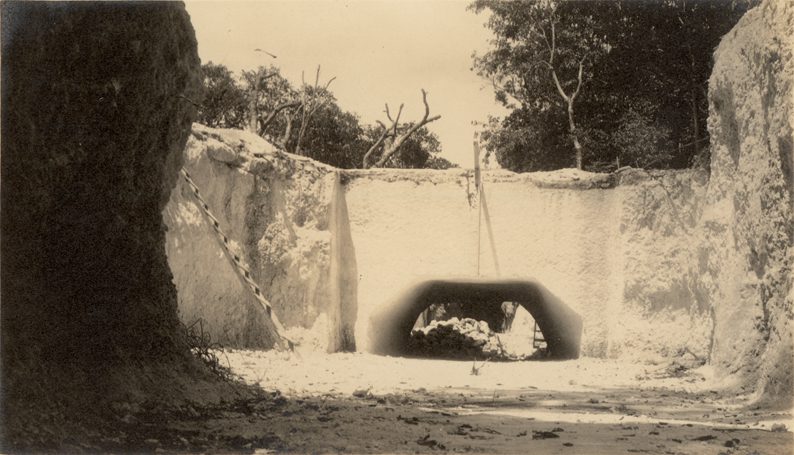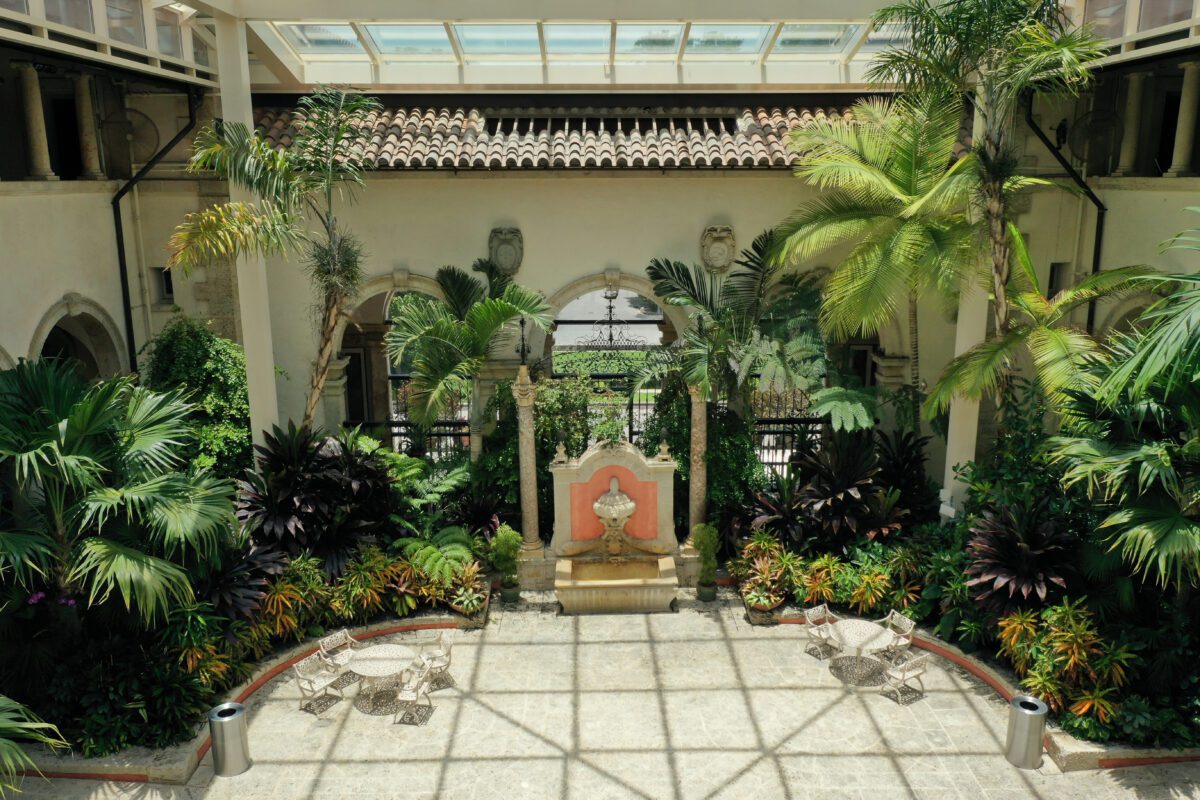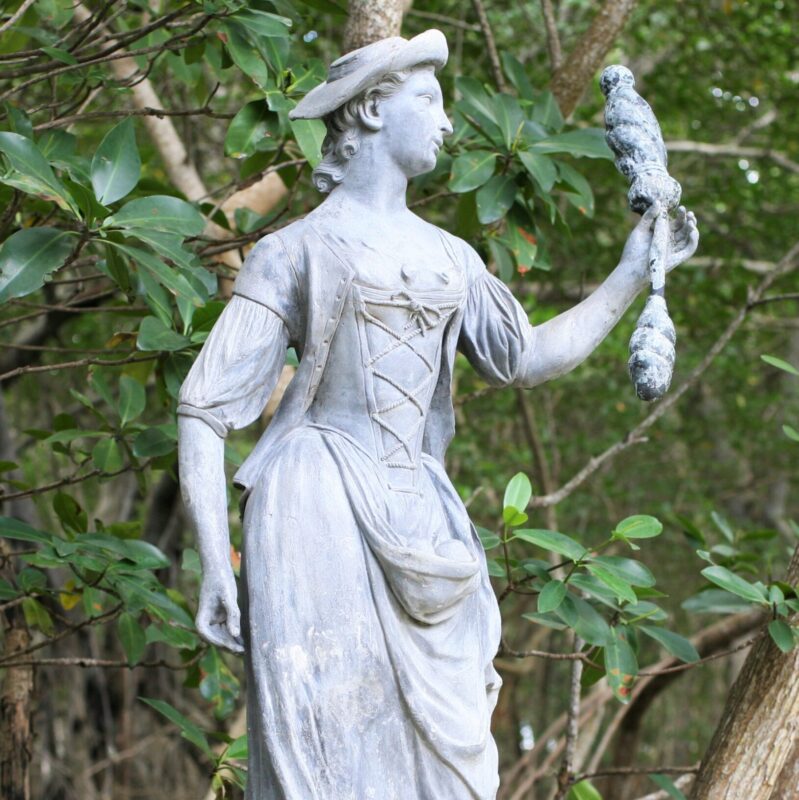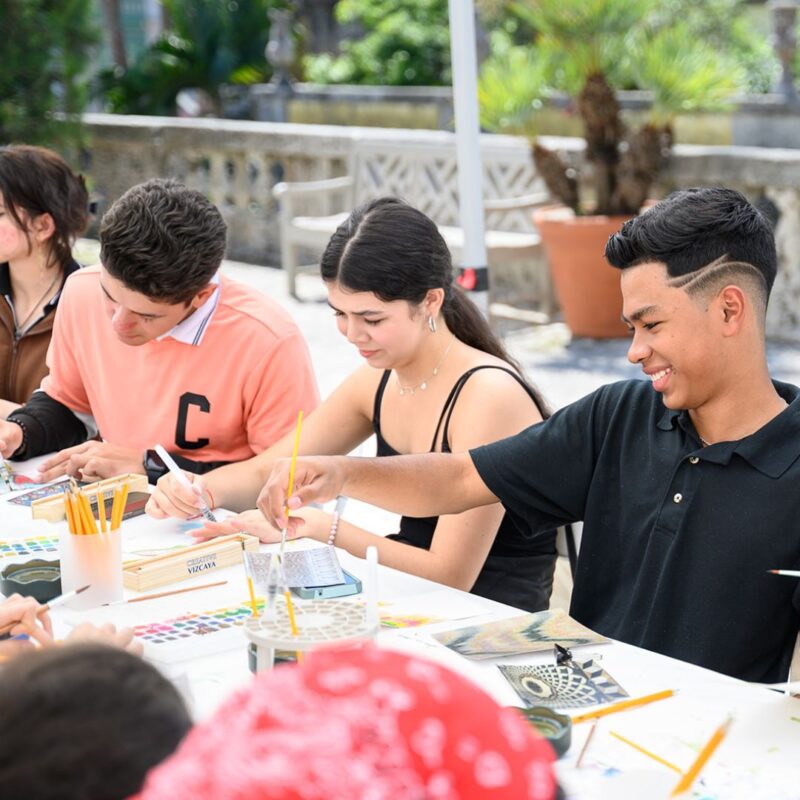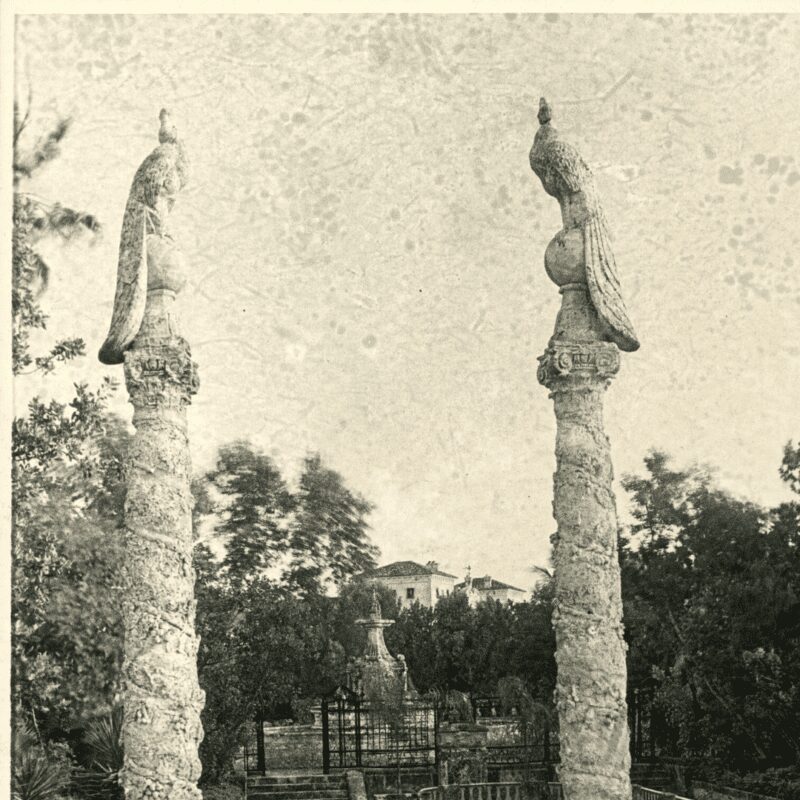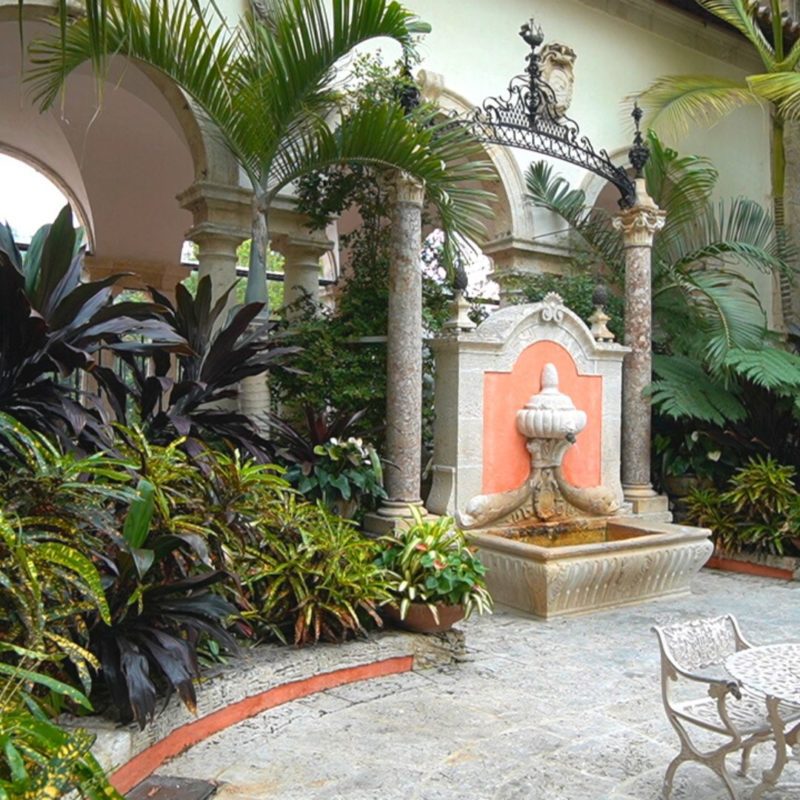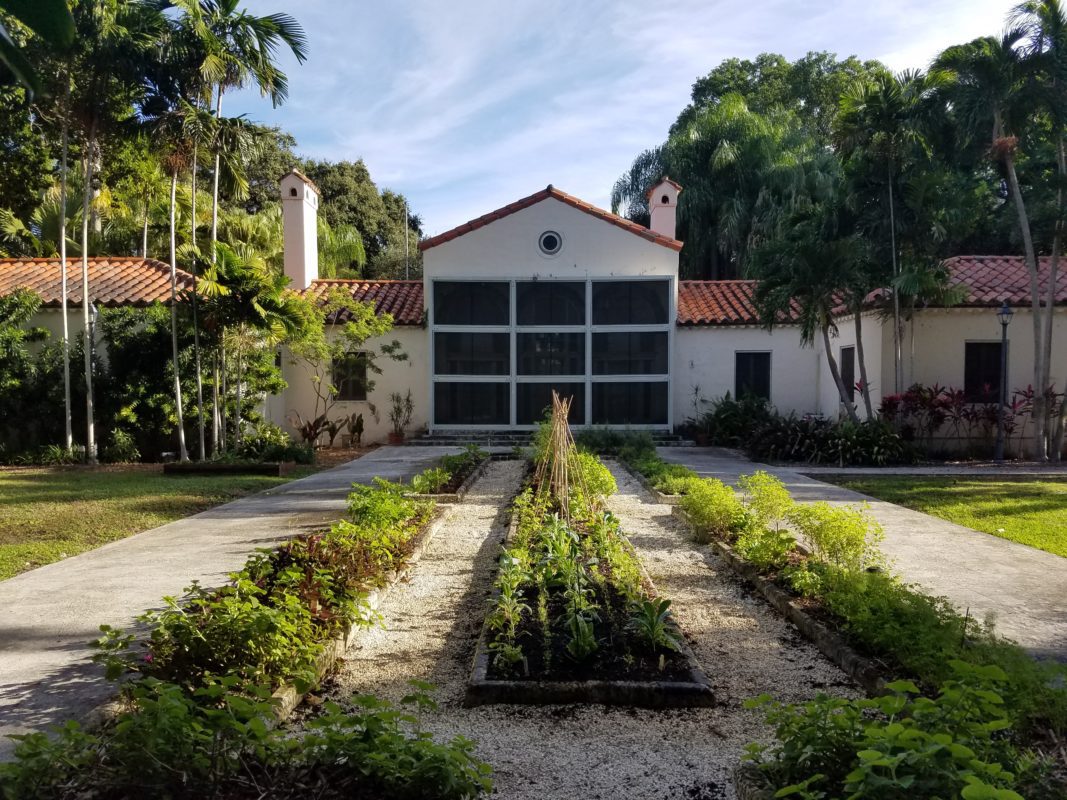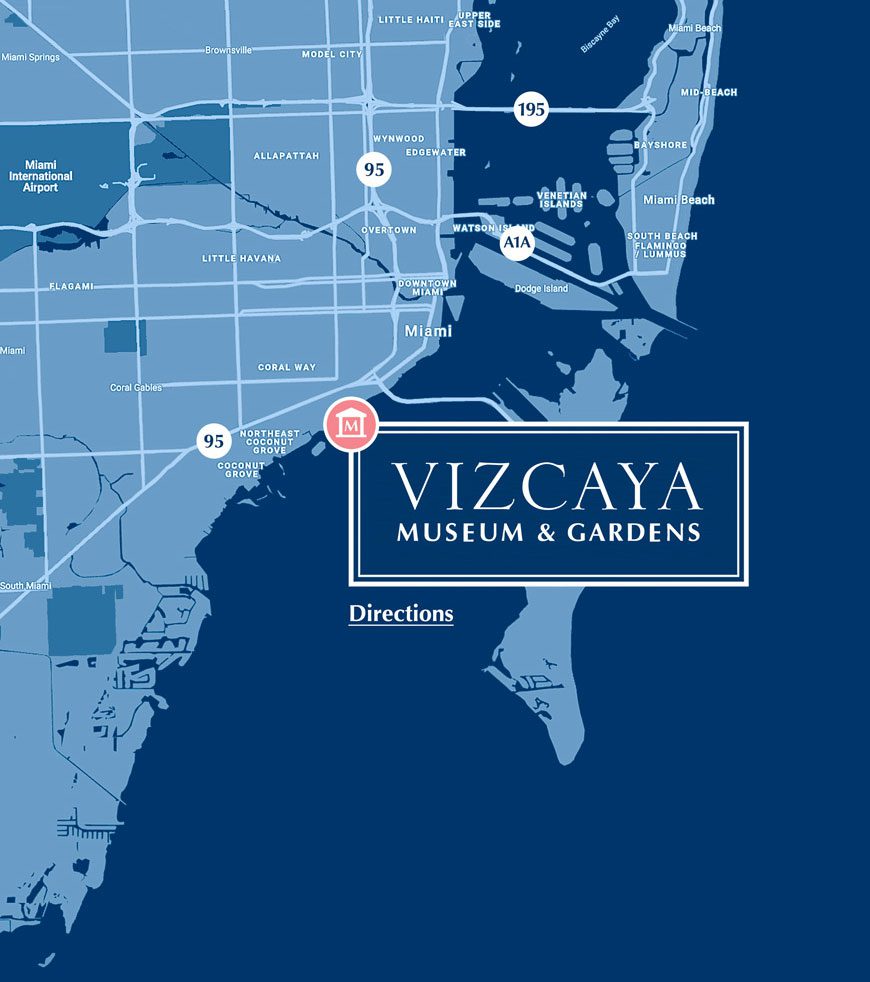The Gardens
Vizcaya’s European-inspired gardens are among the most elaborate in the United States. Reminiscent of gardens created in seventeenth- and eighteenth-century Italy and France, the overall landscape design is conceived as a series of rooms.
The central space is dominated by low hedges, or parterres, in a geometric arrangement. Beyond that are the evocative Secret Garden, the intimate Theater Garden, the playful Maze Garden and the once-watery domain of the Fountain Garden. On either side of this designed landscape, James Deering preserved the native forest.
FACTS ABOUT THE GARDENS
The Art and Architecture
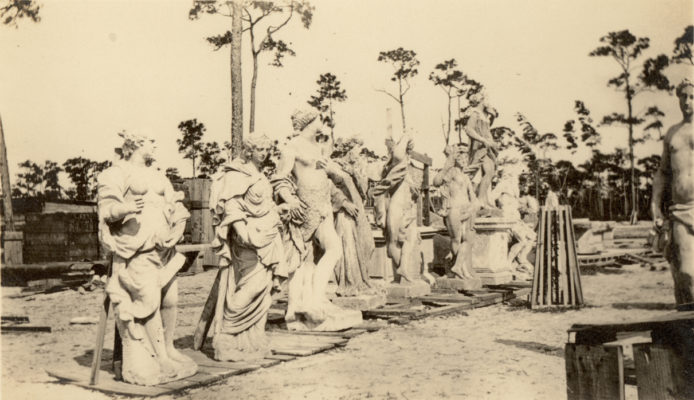
Vizcaya’s exuberant gardens are characterized by an abundance of architectural structures and details, elaborate fountains, and antique and commissioned sculptures. The use of sculptures that were already old and of soft and porous coral stone resulted, quite intentionally, in the gardens having a weathered appearance soon after their completion. To further the appearance of age, Deering and Paul Chalfin planted numerous mature trees, along with vines and plants that would drape themselves over the garden structures.
The Landscape Architect
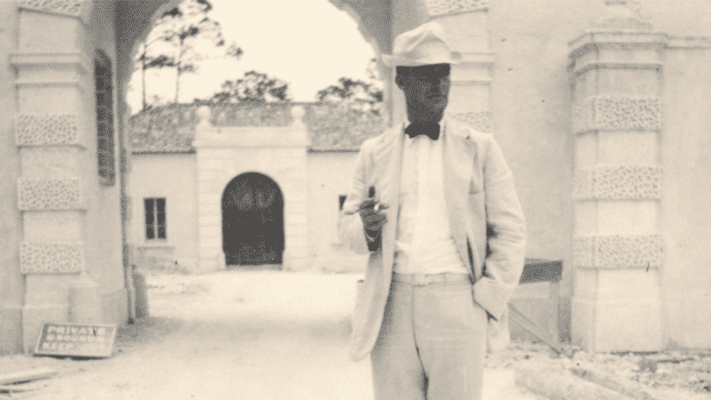
Landscape architect Diego Suarez referenced many places in the design of Vizcaya’s formal gardens; most are around Florence and Rome. In the outer gardens that no longer exist, Vizcaya’s creators instead looked to the Everglades, North Africa and even Asia for landscape and architectural inspiration.
The Garden Mound
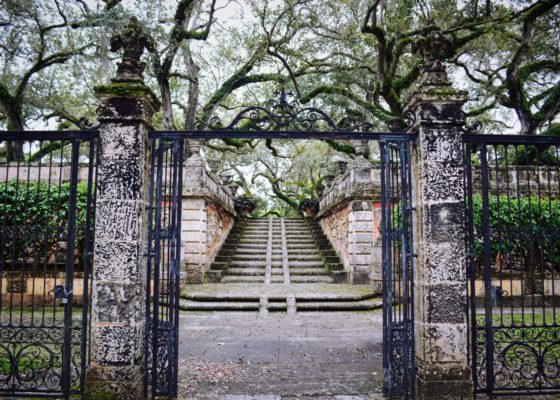
The original plan for the formal gardens included a series of terraces that began at the Main House and ended at a large lagoon. Suarez realized that the light reflecting off the water would be blinding to garden visitors and that the formal gardens would melt into the jungle beyond—hardly a fitting conclusion for such a grandly conceived landscape. He cleverly redesigned the entire formal garden and added the Garden Mound, an artificial hill that blocks the view from the house and creates long perspectives on its sides.
At the Garden Mound and elsewhere, Chalfin embellished Suarez’s design and their combined inventiveness created Vizcaya’s uniquely romantic subtropical gardens.
SUPPORT THE PRESERVATION OF VIZCAYA
ABOUT THE LIVING COLLECTION
Collection Management
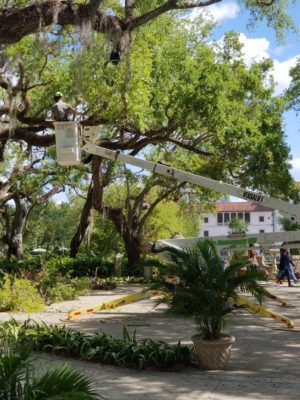
Vizcaya’s diverse horticultural collections range from 400-year-old trees nestled in endangered subtropical forests to an orchid collection numbering over 2,000 specimens. Our living collections are managed similarly to our art collection—plants are catalogued, researched and conserved.
The Native Forest
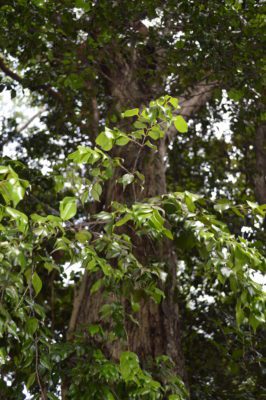
Lorem ipsum dolor sit amet, consectetuer adipiscing elit, sed diam nonummy nibh euismod tincidunt ut laoreet dolore magna aliquam erat volutpat. Lorem ipsum dolor sit amet, consectetuer adipiscing elit, sed diam nonummy nibh euismod tincidunt ut laoreet dolore magna aliquam erat volutpat. Lorem ipsum dolor sit amet, consectetuer adipiscing elit, sed diam nonummy nibh.
The Mangrove Shoreline
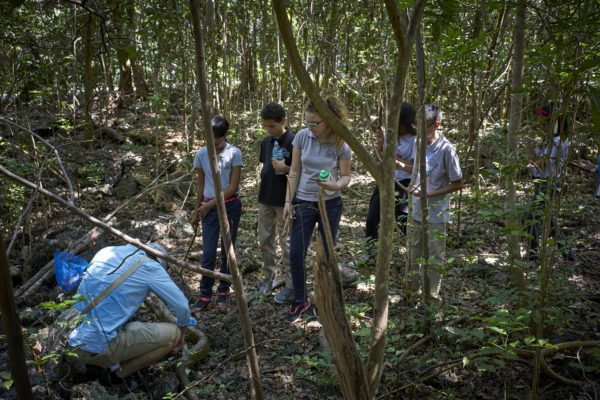
Deering also saved a portion of the once-extensive mangrove forests that lined the shoreline of the property. He recognized that these trees protect the gardens from salt air and wind, and this forest still shelters the gardens today. Vizcaya actively manages our forests to ensure their long-term health; and to help perpetuate these plants, we allow limited seed harvests every year.
Highlights of Original Plantings
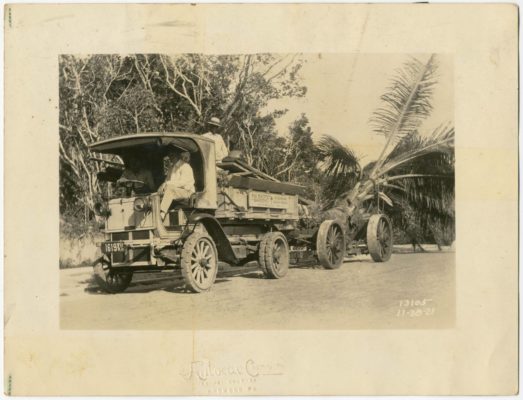
After the land was cleared, Vizcaya’s extensive and elaborate gardens were built, taking almost eight years. During construction, numerous fully-grown trees were harvested from other properties owned by Deering. Among them were massive live oaks that were transported to Vizcaya and lifted onto the top of the Garden Mound, where they remain today.
Deering even paid $1,500 to save a large strangler fig from imminent destruction. The tree was relocated, hauled to Vizcaya by barge and planted in the gardens—only to blow down in a thunderstorm some months later.
Vizcaya’s patron also purchased over one hundred Royal Palms from Cuba and brought them to Vizcaya by boat. One remaining palm is a Florida Challenger, the 4th largest Royal Palm. To record their existing locations and sizes and to help maintain their health, we recently began to enter these historic trees in Vizcaya’s plant database.
Nestled among the forest are elaborately maintained parterres and shrub borders that are filled with unusual plants such as the Peach Palm, Bactris mexicana; the Giant Elephant Ear, Alocasia ‘Borneo Giant’; and the humorously named flowering lily – Crinum ‘Regina’s Disco Lounge.’
The Orchid Collection
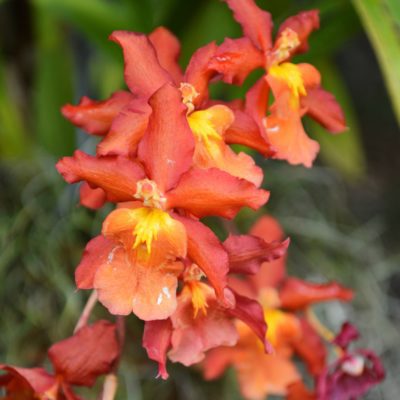
Mr. Deering loved orchids, had large greenhouses to encourage their bloom for cut flower arrangements and specifically requested that live orchid plants be attached to the trees around the north side of his house.
Orchids still have a prominent presence at Vizcaya, thanks to the David A. Klein Foundation, which funds Vizcaya’s orchid program. Greenhouses shelter a collection of over 2,000 plants, and many of those are used for floral displays in the David A. Klein Orchidarium and the Courtyard of the Main House. Vizcaya’s collection includes many Florida natives and warm-growing exotic orchids, some of significant size and rarity like our Phalaenopsis bulbophyllum and Stanhopea species.
BEAUTY TO BEHOLD
The gallery below represents the many facets of Vizcaya’s unique landscape architecture. The gardens feature a wide variety of living collections, ranging from endangered orchids and water lilies, to historic oak trees and native shrubs.
LEARN MORE
Explore stories about the gardens and Vizcaya’s activities to ensure the resilience and sustainability of our environment.


![Composting Done for You [GIVEAWAY]](https://vizcaya.org/wp-content/uploads/2024/01/Composting-Giveaway-800x800.png)

